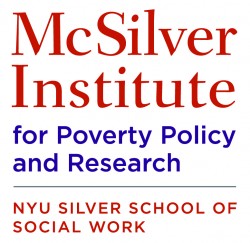
Direct Service Implications
While living in America may mean you have a refrigerator, it does not mean you have food to keep cold. For providers, working on a micro level fighting poverty comes with combating its impacts on the front lines. For individuals and families struggling to secure work, healthy food and access to health care, providers must be able to navigate the complicated resources that may be available to them.
To gather better knowledge of social services designed to aid those in need, providers and individuals can explore their state’s social service departments through their state government website. In addition, Ilaina Edison, Senior Vice President at the Visiting Nurse Service of New York, has written eloquently about the intersection of providers empowering clients while helping them navigate social benefit systems.
Courtesy of McSilver Institute of Poverty Policy and Research who has kindly given SJS permission to syndicate this piece.
Disclaimer: The views and opinions expressed in the Policy News Briefs are not necessarily the views of the McSilver Institute for Poverty Policy and Research or NYU’s Silver School of Social Work. If you have comments or suggestions about this service, contact us at mcsilver@nyu.edu.
Sources:
Our authors want to hear from you! Click to leave a comment
Related Posts



